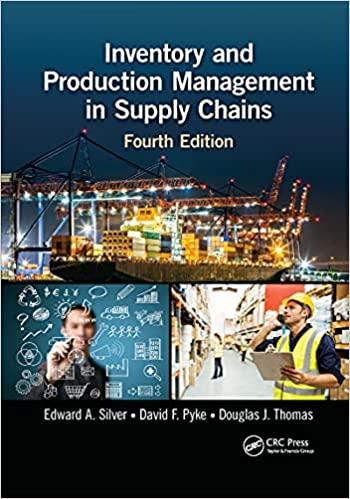Consider an item where the assumptions of Section 5.3.1 are reasonable (including L = 0), but with
Question:
Consider an item where the assumptions of Section 5.3.1 are reasonable (including L = 0), but with one important exception, namely that there is a significant chance of the perishability of material kept too long in the inventory. Specifically, consider an order that arrives at time 0 (the beginning of period 1). The units of this order can become unusable at the end of each period that they are kept in stock. In particular, it is reasonable to assume that, for any period, there is a fixed chance p that any good inventory at the start of that period, which is still left over at the end of the period, will not be usable for satisfying the demand in future periods. Note that we are assuming that at the end of a period, one of the two things happens: (1) all of the remaining inventory is still usable, or (2) all of the remaining inventory has become worthless (with 0 salvage value). In the latter case, a new replenishment must be immediately placed (remember L = 0) to avoid a shortage in the next period. Assume that, if spoilage occurs right at the end of a period, then carrying costs are still incurred for the (now useless) inventory carried over into the next period but that this inventory is discarded before the end of that next period.
a. What should tend to happen to the best value of T as p increases?
b. Develop a heuristic decision rule (in the spirit of the Silver–Meal heuristic) for choosing an appropriate order quantity at time 0. Use the notation consistent with the text. Make sure that your heuristic gives reasonable results for the limiting cases of p = 0 and p = 1.
c. Illustrate your rule with the following numerical example (but only choose the firstorder quantity, the one at time 0). Also, determine the order quantity that would be found by the Silver–Meal heuristic (i.e., assuming p = 0) and comment on any difference from the value obtained using the heuristic with p > 0.
A = $50, v = $10/unit, r = 0.02$/$/period, p = 0.01 j 1 2 3 4 5 6...
D(j) units 200 100 80 50 30 100.
Step by Step Answer:

Inventory And Production Management In Supply Chains
ISBN: 9781032179322
4th Edition
Authors: Edward A Silver, David F Pyke, Douglas J Thomas





